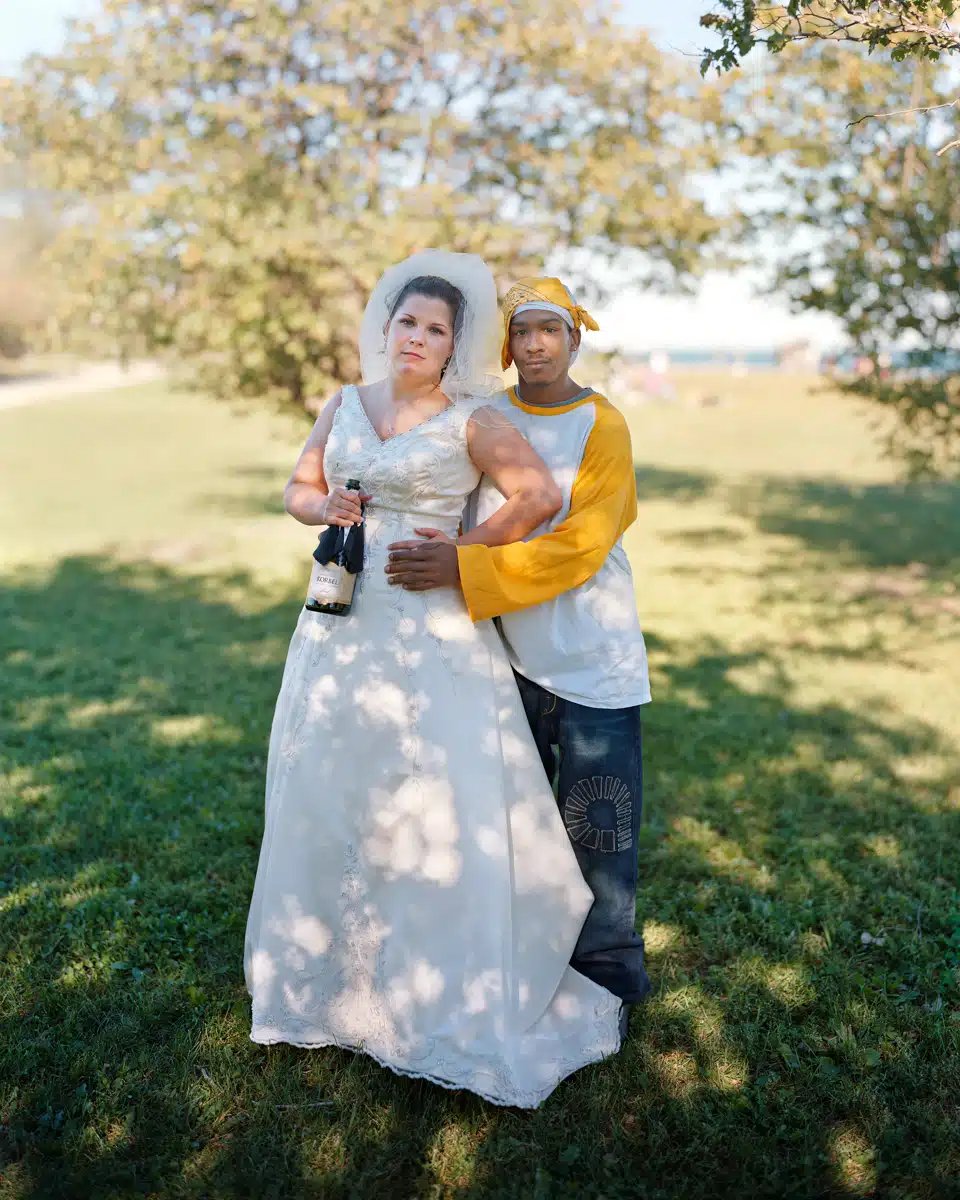
Julie & Xavier, Illinois, 2007
Seventeen years ago, photographer Richard Renaldi took a gamble. What would it look like if he brought two strangers spontaneously together and asked to take their portrait? And not just any portrait at that. These portraits were intimate, intended to unite two worlds, if even for an instant.
To answer this question, Renaldi crisscrossed the United States and, starting in 2007, began asking people to pose for a series he would call Touching Strangers. Working both as a photographer and casting director, Renaldi’s images are incredible. At first glance, it seems impossible that these people had only met seconds prior, but that is the reality.
In 2014, Aperture published Renaldi’s Touching Strangers. Now, the photographer is celebrating this 10th anniversary with a limited-edition print and a web gallery filled with previously unreleased images from the series. In an age filled with divisive rhetoric, these portraits seem even more important than ever. By showing these complete strangers, often of different races, ages, religions, and sexual orientations, come together so beautifully, Renaldi reminds us of the power in staying united.
My Modern Met had the opportunity to chat with Renaldi about Touching Strangers, from its early conception to his most memorable encounter along the way. Read on for our exclusive interview.

Hunter, Margaret, & Abigail; New York; 2013
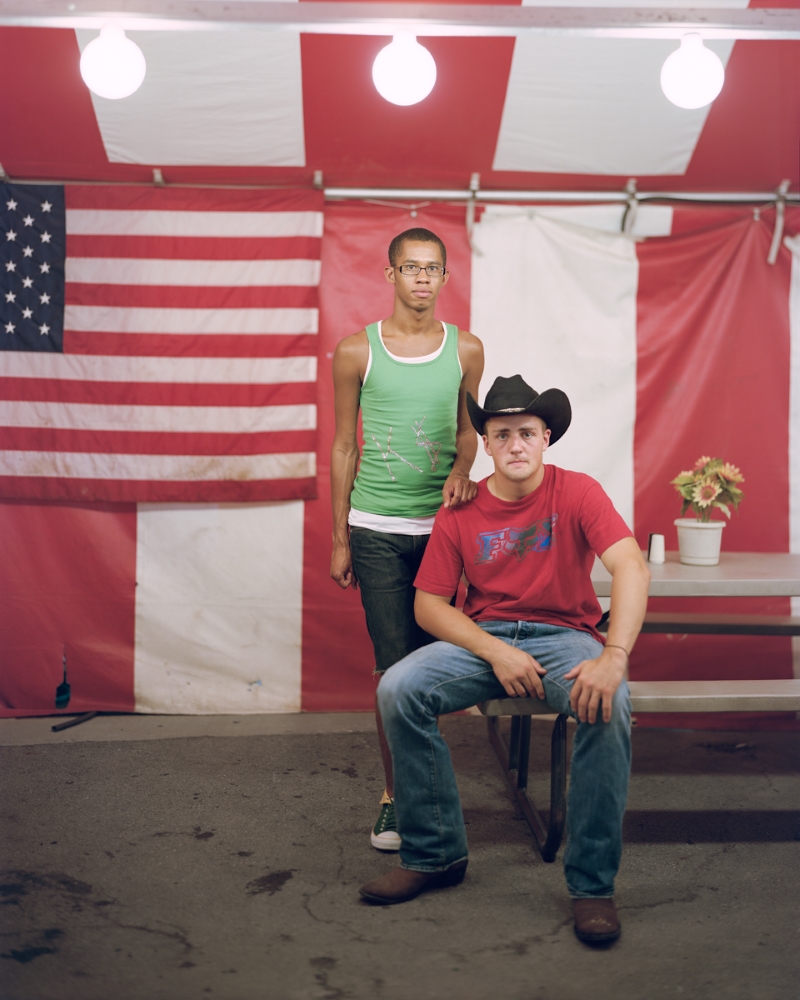
Matthew & Jeromy, Ohio, 2011
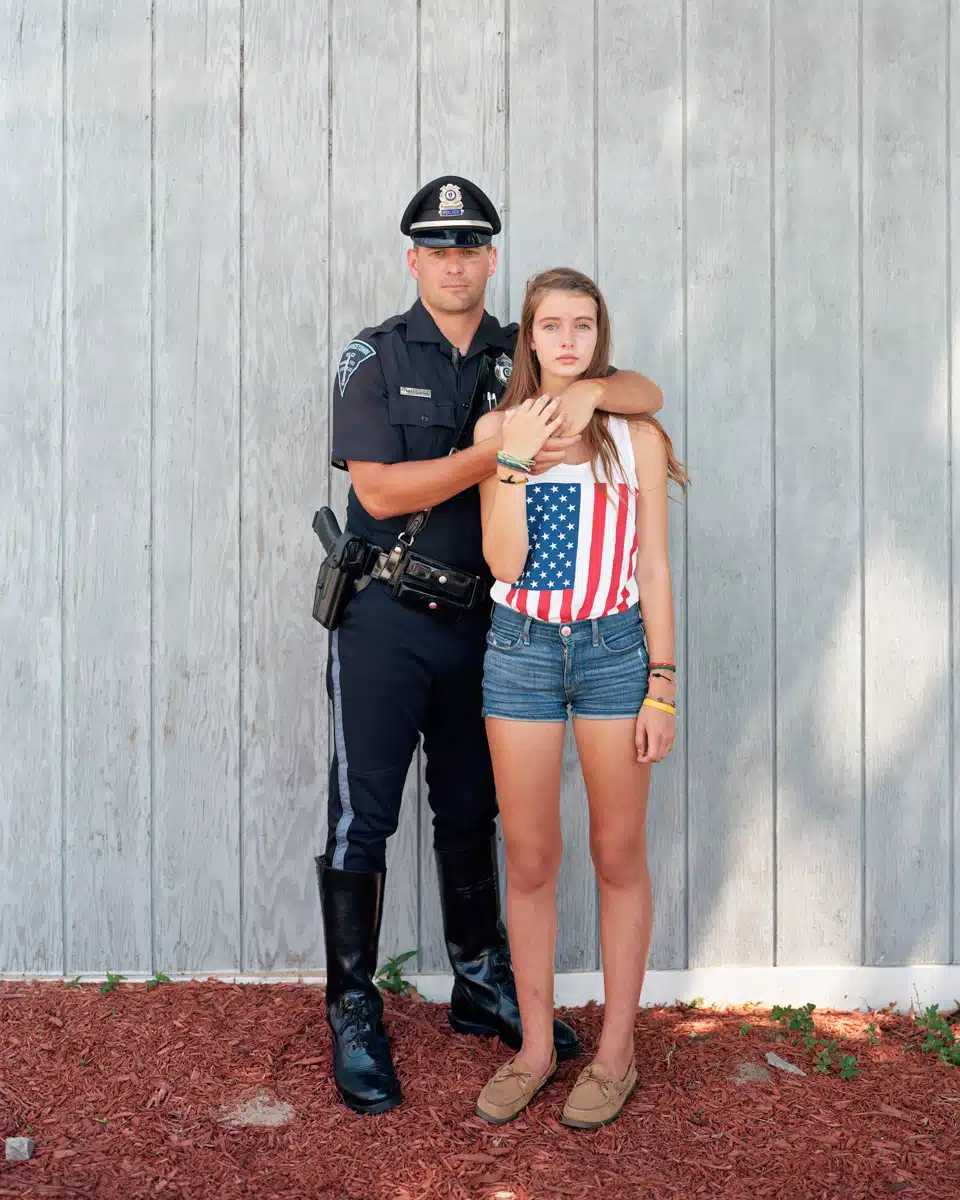
Nathan & Robyn, Massachusetts, 2012
What sparked the idea for Touching Strangers?
Working on the streets as an environmental portraitist, I was aware of the mass of humanity constantly intersecting on the streets and avenues of New York City. Aware that most of the millions of people in the city are strangers to each other, I was curious about the connections that exist between us and the potential for intimacy between strangers. Thinking of the people in the city linked by an invisible adhesive, I wanted to make those connections visible.
So when I started working on See America by Bus and photographed strangers together on communal benches at Greyhound Bus Stations, it occurred to me that someday I could try and intentionally make portraits of strangers together like the way I was currently doing on those bus station benches but rather pose them somewhere out in the world and ask them to step outside of their zones of comfort and physically touch each other. What would that look like?
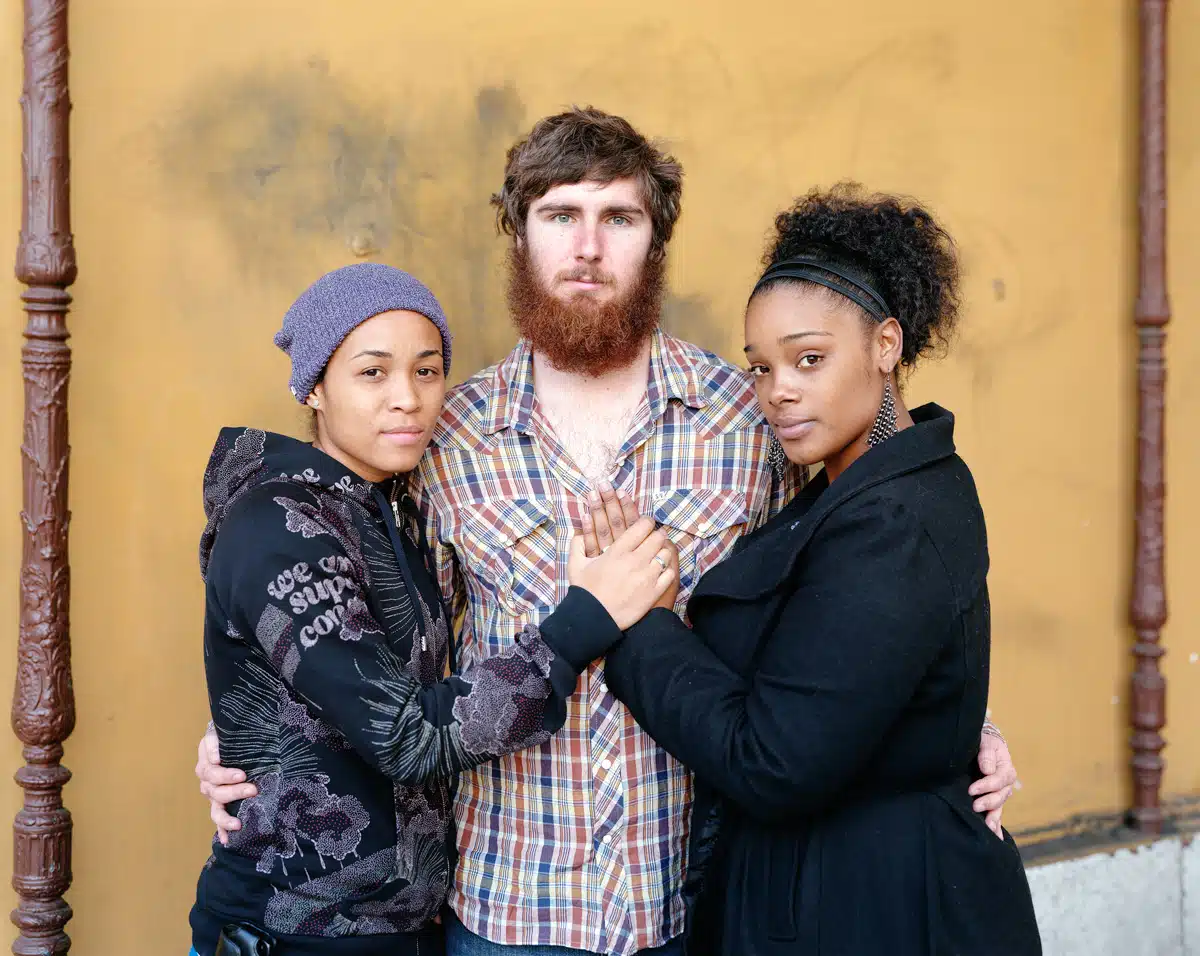
Tari, Shawn, & Summer; California; 2012
Can you describe the process of what it’s like to get these strangers to interact and get so close?
The instincts of most strangers when they are initially asked to touch each other’s bodies are both tentative and awkward.
The most obvious gesture assumed in the absence of direction is to hold hands or to place their arms around each other’s shoulders. But I wanted more. To create more intimacy between them, I needed to step into the role of director and instruct specific points of contact for many of my collaborators.
Like a stage hypnotist choosing volunteers from an audience, I had to learn to read my subjects’ openness to suggestions and how far they were willing to be pushed. Casting in public is challenging. Even in large cities where the life of the street seems to present nearly unlimited combinations and possibilities, a successful pairing is dependent primarily on serendipity.
Initially, I would choose my subjects from amenable passersby, but as the project moved forward, I became more selective. I required a large pool of people from which to draw, seeking to isolate them from the chaotic urban swirl in order to create a kind of rhyme between my collaborators and their backgrounds. The first subject also had to be willing to wait with me until I found them a partner. I lost many opportunities when people simply walked away as I was searching for their companion.

Will & Becky, Ohio, 2014

Ekeabong & Andrew, California, 2013
What’s the most interesting thing you’ve learned or observed during this project?
One insight that I gained after putting the work out into the world was that the viewer, even knowing that the people in the photographs were strangers, would still have a strong impulse to create a narrative about the relationship of the people in the photographs. That the impulse to understand or imply a relationship between two or more subjects who were total strangers and not related in any way other than their common humanity would have been so strong was surprising to me.
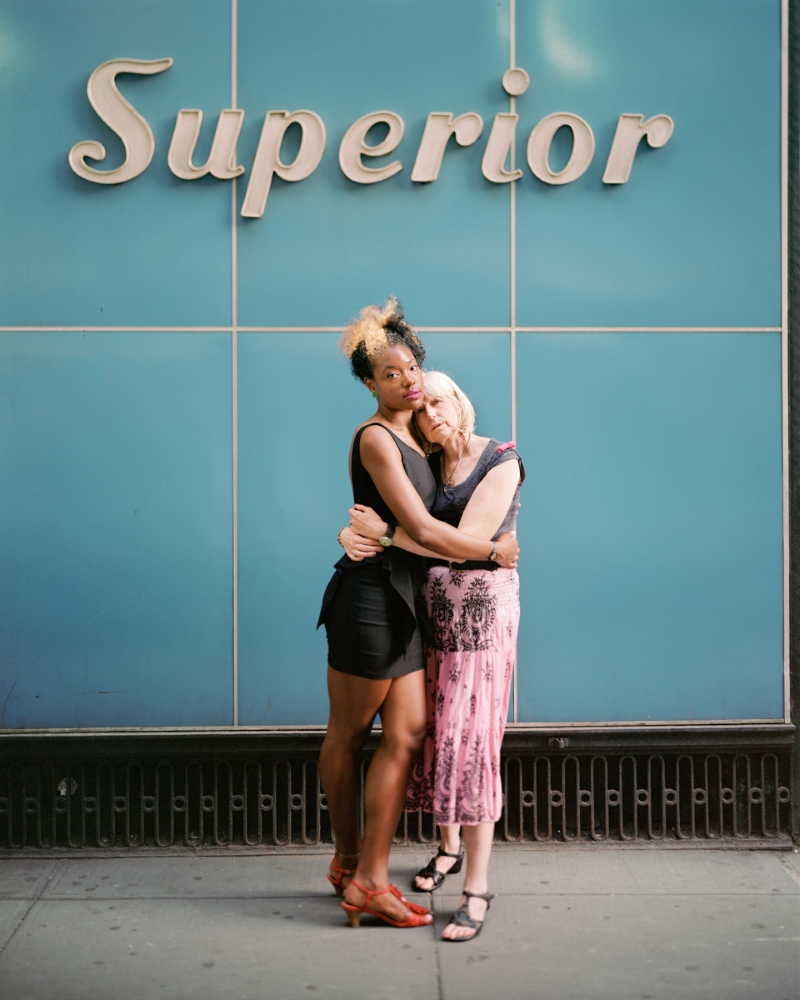
Elaine & Arly, New York, 2012
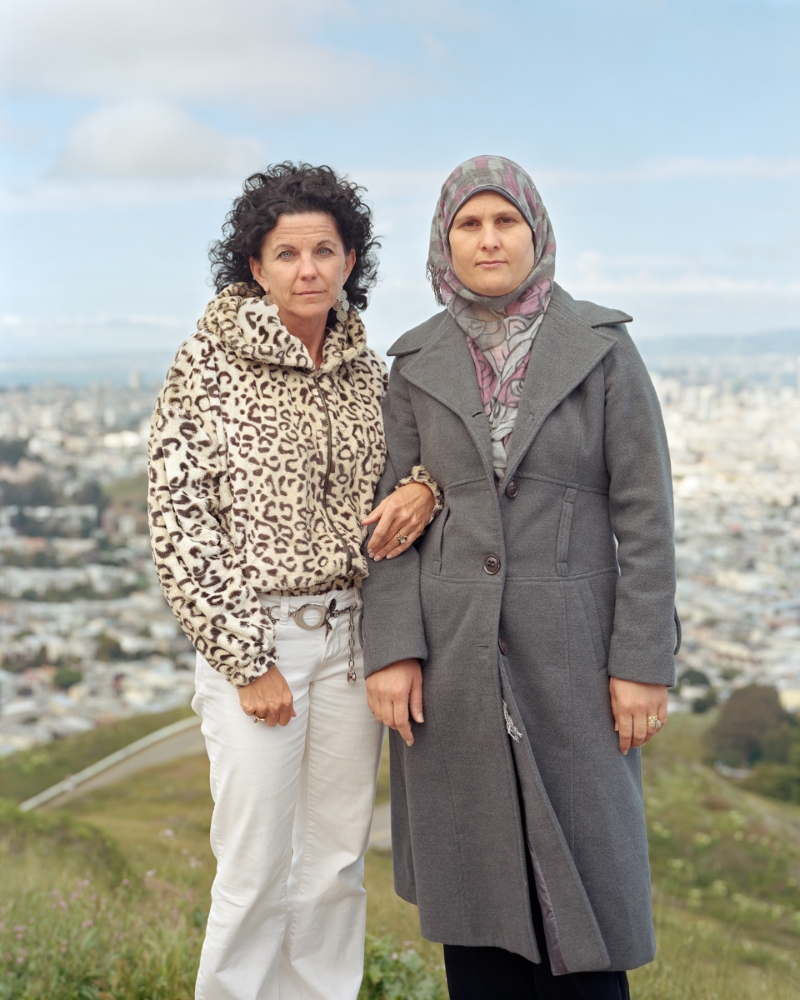
Rayqa & Annalee, California, 2012
What was your most memorable encounter during a shoot for the project?
There were many memorable encounters; however, this one feels particularly compelling.
On San Francisco’s Twin Peaks, I once asked a woman from South Carolina with a deep Southern accent named Annalee if she would volunteer to be in one of the portraits. She reluctantly agreed, and I went looking for her companion. Moments later, I saw a Muslim woman wearing a hijab walking with her husband. I had been trying for years to cast a traditionally dressed Muslim woman and had always been turned down.
I began to wonder if Annalee, waiting in the distance, would see me asking a headscarfed woman and change her mind. I had a notion that Southerners were generally prejudiced against Muslims, and I worried that I was now potentially responsible for subjecting the Muslim woman, who introduced herself as Rayqa, to a painful incidence of intolerance.
Rayqa’s husband gave her permission to pose for me, but she refused. Dejected, I went looking for another person to pose with Annalee when I heard a shout: “Hey, photographer!” The two women were holding hands. Annalee had intercepted Rayqa, introduced herself, and asked her to be in the picture with her.
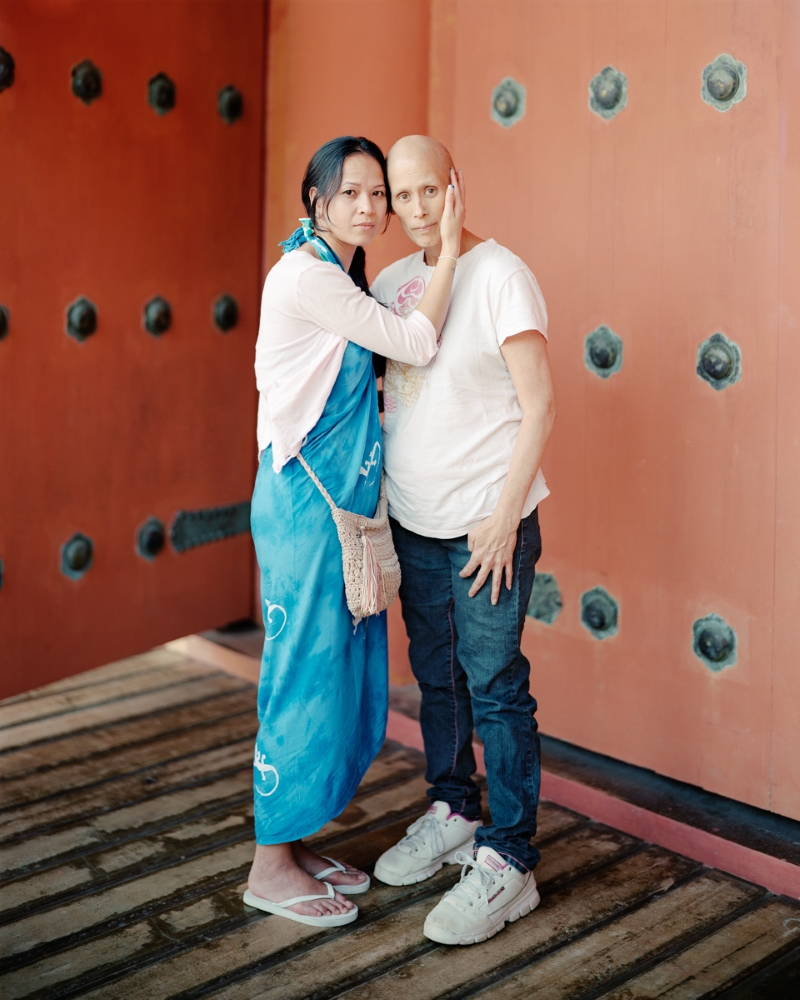
Soukhet & Dawn, Hawaii, 2012
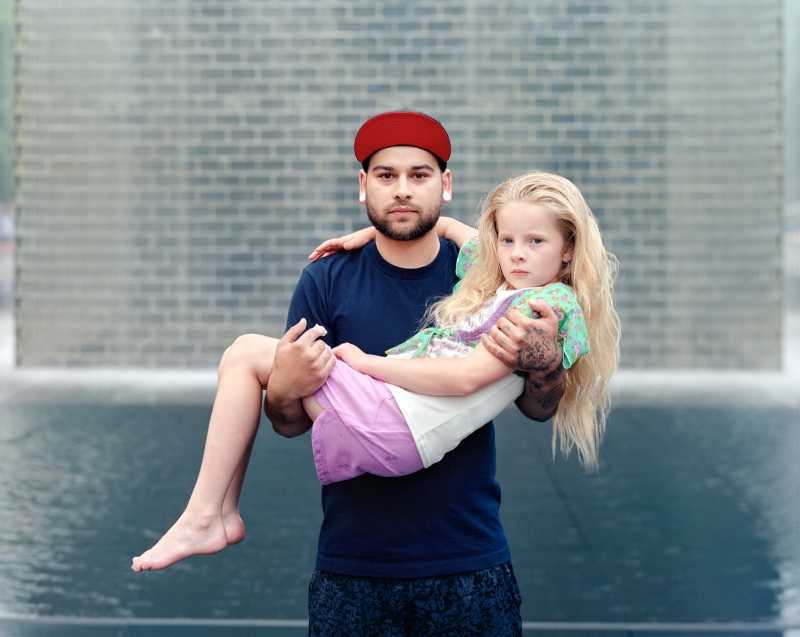
Chris & Amaira, Illinois, 2013
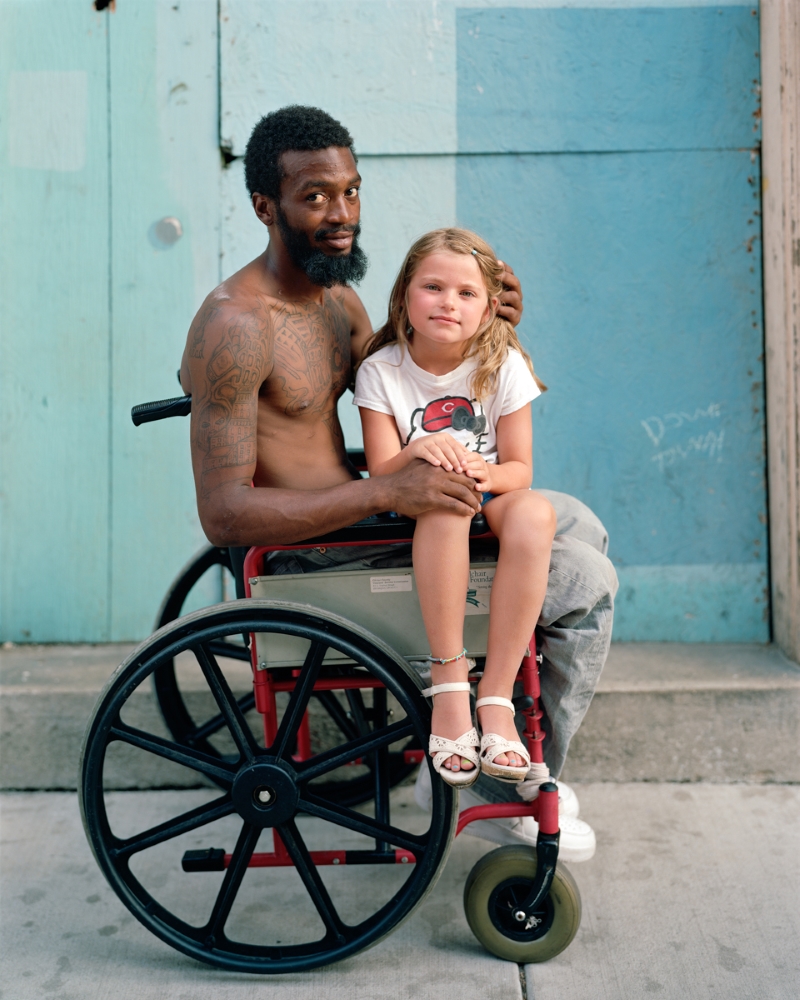
Aaron & Ava, Ohio, 2014
How has the work evolved or changed since you first began in 2007?
Technically I think as the project progressed the photographs got better. The more comfortable and confident I became with my dual role of casting on the street and directing the subjects to be more affectionate with one another, the more intimate and well-composed the pictures became.
I think externally, the world in which this work resides has both evolved and devolved. Touching Strangers illustrates a world where people of various races, religious affiliations, sexes, sexual preferences, and classes interact. One thing I didn’t see on the horizon was the rise of fascism and authoritarianism that has spread across the world. Brexit and Trumpism are certainly forces where the consequences were to tear people apart and sow divisions and distrust from one another, which is a contrast, I think, with the intent of Touching Strangers, which at its core is about bringing people together…
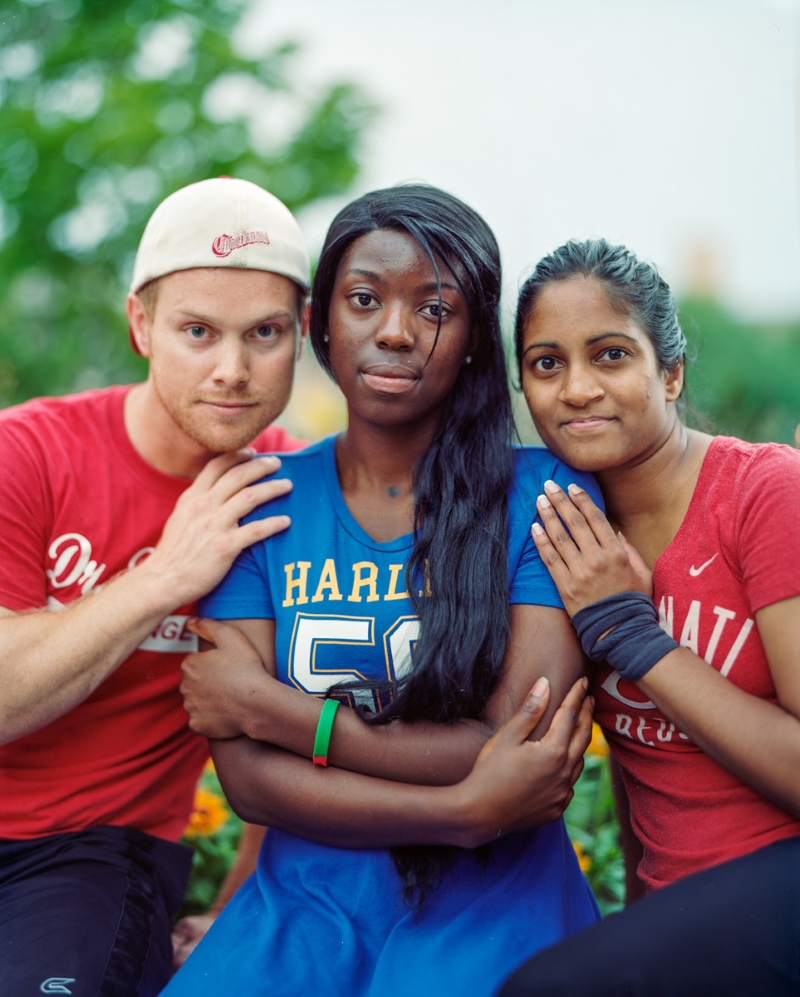
Matt, Allyson, Daya, Ohio, 2014
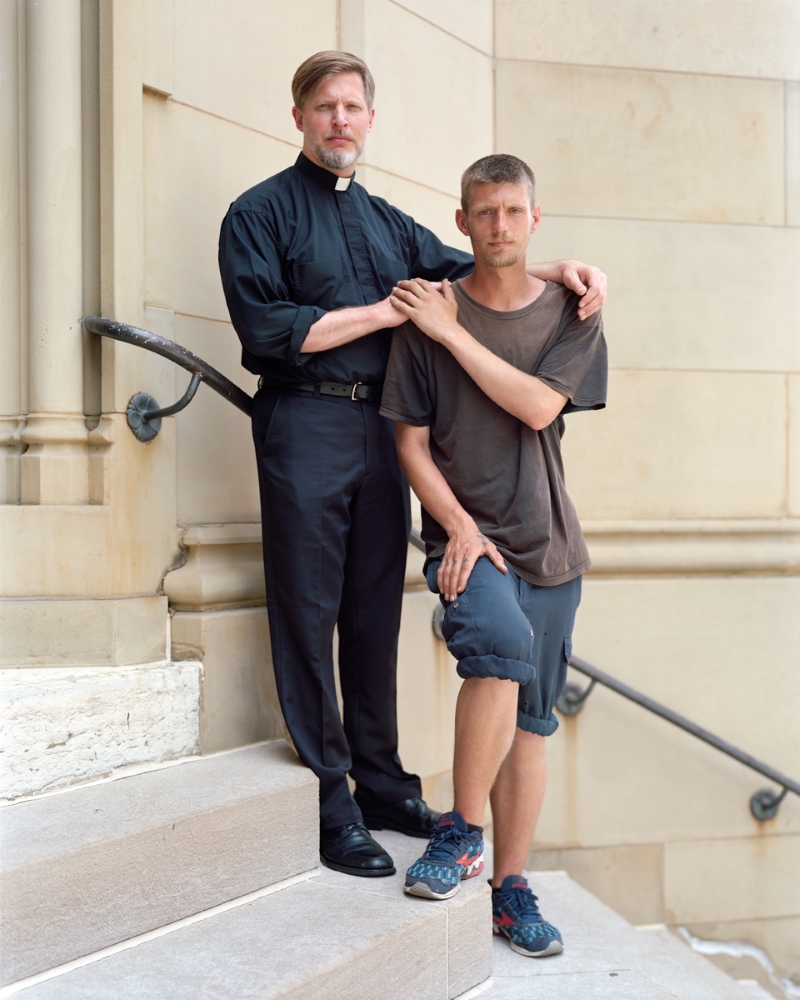
Paul & Andrew, Ohio, 2014
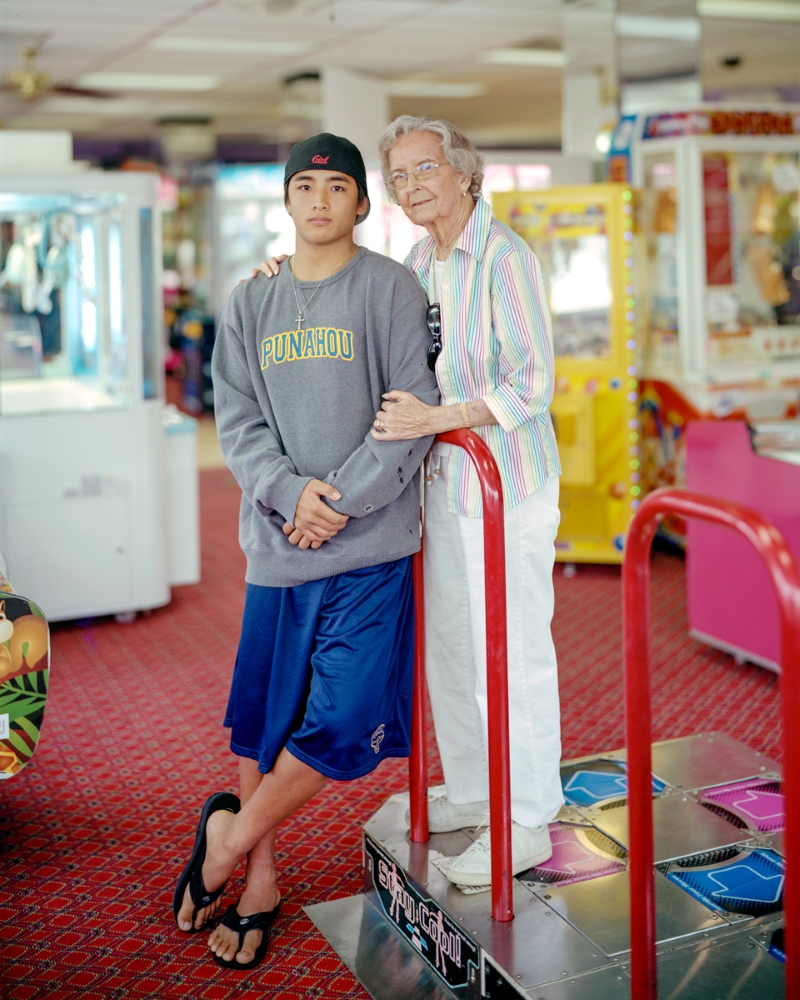
Jesse & June, Hawaii, 2012
Touching Strangers is celebrating its 10-year anniversary. Why did you decide to release extra photos now, and what does this anniversary mean to you?
It feels like 10 years went by really, really fast. I think the project is aging well and that the themes and concepts that the work raises are just as relevant today. To commemorate this anniversary, I am releasing a signed print in an edition of 15 and a new web gallery of 84 additional images that were not in the Aperture edition (many of which I have never shown before).
I began work on Touching Strangers in 2007, the same year that the first iPhone was released, and the social media companies promised a utopian future in which their products would bring the world closer. These disruptions were soon followed by the election of Barack Obama and the assurance that we were moving towards a “post-racial” America. How naive this all reads now.
The project, having been so widely disseminated, enabled others to take ownership of my photographs, projecting stories or psychologies onto them and creating narratives about the relationships. Sometimes, these projections embodied a desire for intimacy or a unifying of our fractured politics.
At the opposite extreme, some people were disturbed by the images, by the idea of close proximity to a stranger’s body—a fear that, rightly or wrongly, was ratified years later during Covid. All this is to say that Touching Strangers is about intimacy, whether we are yearning for it or withdrawing from it. Allies or enemies, we can’t really escape our relationship with each other. I think, perhaps, it’s worth another look at these images now that we have all grown a little older.
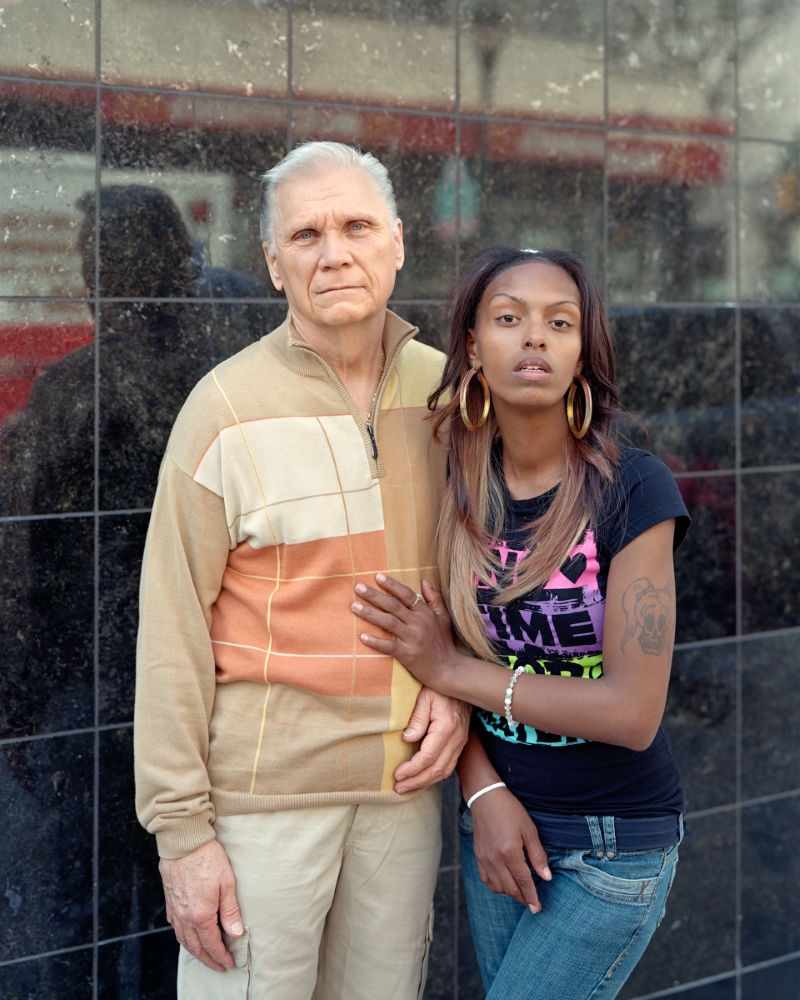
Stanley & Carla, Pennsylvania, 2013
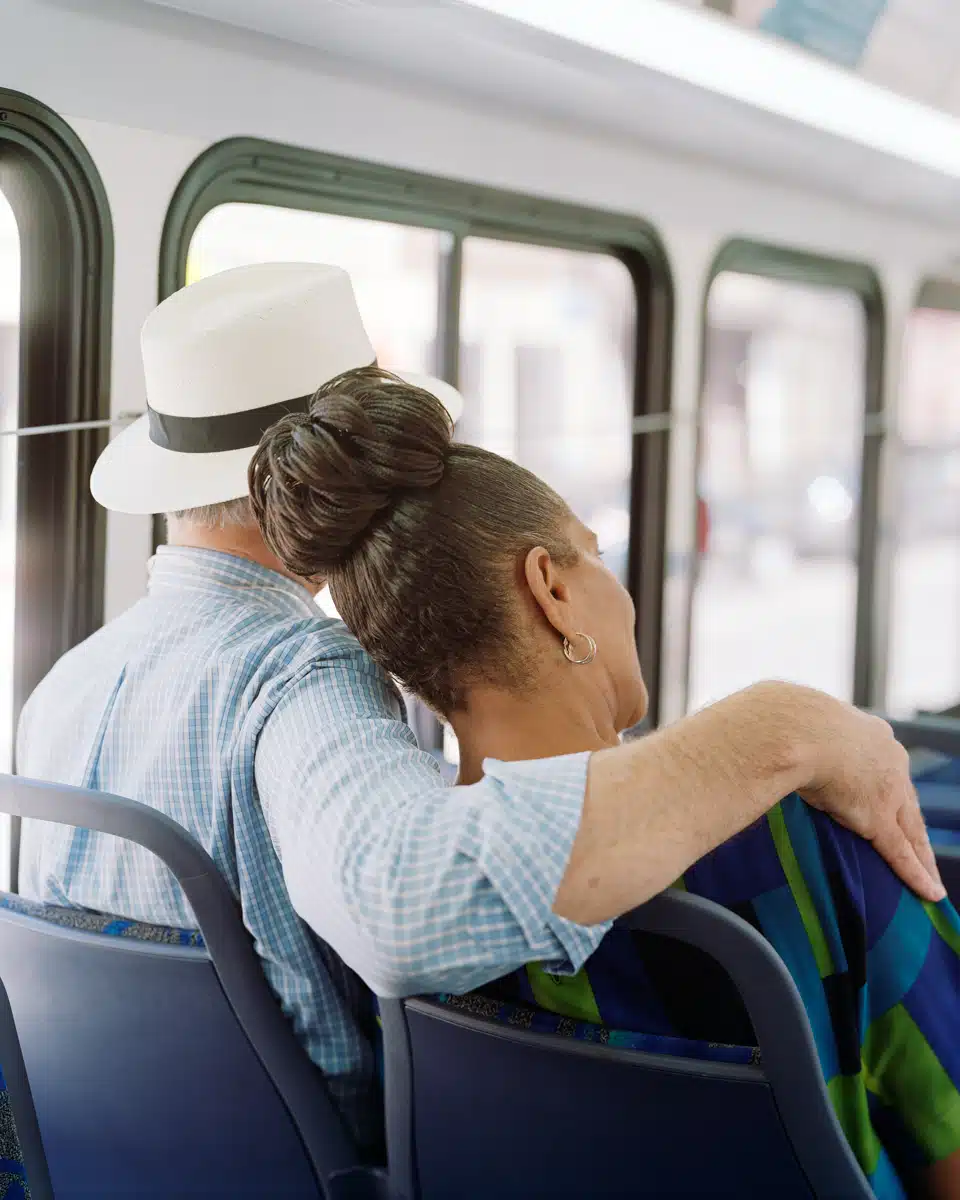
Tom & Kim, Ohio, 2014
Richard Renaldi: Website | Instagram
My Modern Met granted permission to feature photos by Richard Renaldi.
Related Articles:
Photos of the Same Locations 10 Years Apart Show Evolution of a City
Photographer Captures Portraits of Strangers He Met on the Streets 25 Years Later
Before and After Photos Reveal How Much a Smile Changes a Person’s Aura [Interview]
Photographer Spends a Full Year Taking Portraits of Strangers Every Single Day [Interview]
